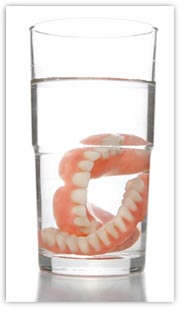
Flexible partials are part of the advanced restorative dentistry field of prosthodontics which remedies oral health problems pertaining to the diagnosis, treatment planning, rehabilitation and maintenance of the oral function, comfort, appearance and health of patients with clinical conditions associated with missing or deficient teeth and/or oral and maxillofacial tissues using biocompatible substitutes.
A prosthodontist receives an additional three to four years of training beyond dental school and specializes in the esthetic restoration and replacement of teeth.
Breakthroughs in modern dentistry now allow for what are called removable partial dentures (RPD’s) that are flexible and more aesthetically pleasing than more traditional dentures.
These partial dentures are a great alternative for patients who prefer to wear a removable denture rather than a fixed restoration such as a dental bridge or dental implants.
The flexible base of the appliance adapts to the constant movement and flexibility in the mouth.
Flexible partial dentures are custom fabricated in a dental laboratory according to the specifications your dentist provides.
They can only be placed by a licensed dentist after an impression of your mouth has been taken, and are only available by prescription.
Because the procedure is minimally invasive, the flexible partials involve a very simple preparation and your natural teeth don’t need to be altered in any way.
Additionally, the materials used in the flexible partials blend with the tissue in your mouth for a look that is completely natural.
The lightweight and inherent flexibility of the partials make the adjustment period easy. Most patients become accustomed to their new dental restoration immediately.
In the event that you have never worn a dental appliance before, it may take a bit more time to adjust to the flexible partials.
If constant irritation persists, contact your dentist so that they may make the necessary changes to your appliance.
Benefits of Flexible Partial Dentures
Besides improving the esthetic and functional appearance of your mouth, flexible partials also offer other great benefits.
They are used when one or more natural teeth remain in the upper or lower jaw.
Because there are no metal clasps they are virtually invisible and blend right in with the natural color of the tissue in your mouth so no one has to know you’re wearing it. Additionally, flexible partials also:
- Make chewing and speaking easier
- Alleviate the stress of your bite
- Maintain the shape of your face
- Prevent your teeth from shifting
- Decrease the risk of periodontal disease (gum disease)
Flexible Partial Dentures Materials
The most recent advances in prosthodontics dental technology have been the application of nylon-like materials to the fabrication of dental appliances.
The unsightly and uncomfortable materials of traditional dentures such as metal and the acrylic denture material used for RPDs have been replaced by nylon.
Nylon closely resembles the material of the fluorescent orange traffic cones you see on the highway.
The advantage of nylon is that it is nearly unbreakable, closely resembles the gums in color, can be very thin, and can form not only the denture base, but the clasps as well.
Because the clasps are built to curl around the necks of the teeth, they are practically indistinguishable from the gums that normally surround the teeth.
The most popular brands of this type of flexible partial are Valplast and Sunflex.
Another type of flexible partial denture base employs the use of a vinyl composite instead of nylon.
These materials are also flexible and can be manufactured with tooth or gum-colored clasps.
Vinyl composite dentures are considered by many, easier to adjust and are thus considered a more user-friendly denture base.
Common brands that make this type of flexible denture are Flexite and Ultraflex.
Caring for Your Flexible Partial Denture
Like your natural teeth and gums, flexible partial dentures also require care and good oral hygiene.
Here are some suggestions to keep your restoration looking and functioning like new, and to maximize their lifespan:
- Clean your partials regularly as you would your teeth. Most brands of flexible partials have a specific cleaner that can be used to clean your dentures. Your dentist will be able to help you decide which type of cleaner is appropriate for your specific denture.
- Remove loose particles from your dentures with a sonic denture cleaner or by placing the appliance under running water. Using a toothbrush to clean the denture is not recommended as this may remove the polish and roughen the surface over time.
- When possible, rinse your dentures with water to remove food particles.
- When the dentures are not worn, keep them in water or denture cleaner to keep the surface hydrated.
- Brush and floss regularly as recommended by your dentist.
Cost of Flexible Partial Dentures
Like most dental appliances, the cost of flexible partial dentures may differ for a variety of reasons. Regions have some effect as to what the pricing may be.
For example, living on the east coast is generally more expensive than the mid-west, so a dentist living here may need to charge more to justify the costs of higher office spaces.
You can also expect a difference in cost between prosthodontists and fees charged by cosmetic dentists as the level of training may merit some price increases.
Dental insurance and the provider you have will also be a factor as not all providers offer the same benefits.
It is suggested that you do some comparison shopping before investing in your dentures to find the best plan for your needs.
If you need additional procedures such as extractions of remaining teeth or oral surgery to refine bony ridges the cost of your dentures may be increased.
Typically dentures can range from $400 to $8,000 depending on the fabrication time, cost of dental materials, and experience of the dentist.
